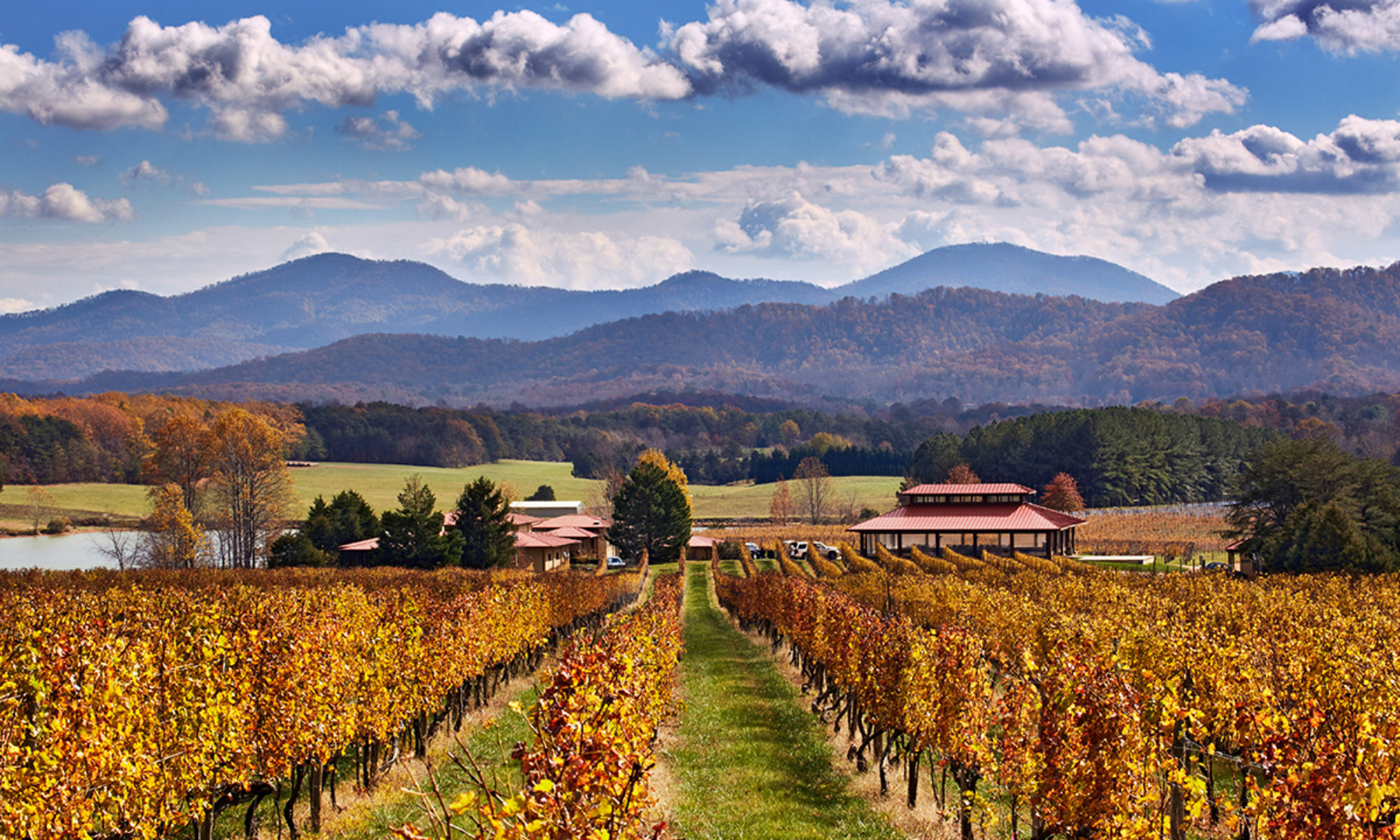Located in at White Oak Farm in Elberon, Surry County, actually across the James River from the city of Hampton Roads and of Jamestown. Owners David and Diane Shelton created the winery as a retirement project, and their son Rich tends the vineyards. First plantings were undertaken in 2008 in a separate vineyard in Surry County, with the Sheltons purchasing White Oak Farm in 2012 and beginning planting vines there. The winery was opened in 2016.
Wines. Tier III. Currently a limited range of wines as the vineyards mature. Red wines include Cabernet Franc and Petit Verdot. White wines include Chardonnay, Seyval Blanc, and a blend featuring the unusual Scuppernong grape. Scuppernongs are a green-gold grape in the family of Muscadine grapes. The Hog Island sweet dessert wines come in both white and red. Viognier and Norton grapes are also being grown.
Setting. One star. White Oak Farm features an 1898 farm house, with a large tasting room, built in the style of a horse barn. A line of magnolia trees leads up to the farmhouse, and the farm property also features Red Angus Cattle, and most visibly goats. There is a Portuguese-inspired goat tower for baby goats, claiming to be the world’s tallest goat tower. A peaceful patio out back overlooks a pond and pasture.
Stories. Hampton Roads. The Hampton Roads area – comprising one of the world’s largest natural harbors and the cities of (among others) Virginia Beach, Portsmouth and Norfolk – is both rich in history and one of Virginia’s major economic engines. Christopher Newport first sailed into the mouth of the James River where Chesapeake Bay flows into the Atlantic Ocean in 1607, and colonists immediately recognized the area’s potential. The term “Hampton” came in honor of the English Earl of Southampton, while “roads” is a nautical reference to a semi-open harbor. Today Hampton Roads, where not only the James but also the important Nansemond and Elizabeth rivers pour into the lower end of the Chesapeake Bay, boasts one of the world’s biggest shipbuilding yards, and the largest military presence on the East Coast. The area’s military importance became visible during the War of 1812, with the unsuccessful British attack on Hampton Roads. The entrance to Chesapeake Bay was fortified at the outset of the Civil War by the construction of Fort Monroe and Fort Wool, supervised in part by young military engineer Robert E Lee. The first ever clash between ironclad warships, the USS Monitor and the CSS Virginia, was the (at the time inconclusive)1862 Battle of Hampton Roads. With the outset of World War I, Naval Station Norfolk was established, to become the largest Naval Base in the world. Today the Hampton Roads area has one of the largest concentrations of military bases and facilities of any metropolitan area in the world. Nearly ¼ of the nation’s active-duty military personnel are stationed here. The broader economic base of this part of Virginia is also largely port-related. The Port of Hampton Roads is the third largest port in the country, after New Orleans and Houston. Shipbuilding, ship repair, cargo transfer and storage, and manufacturing related to the processing of trade all feature prominently in the area. The former Newport News Shipbuilding, now Huntington Ingalls Industries, a few miles up the James River, is one of the world’s largest shipyards. With Virginia Beach, the area also features one of the longest stretches of beachfront in the Mid-Atlantic.
